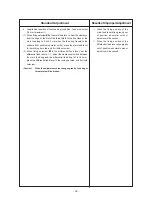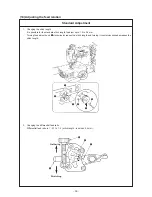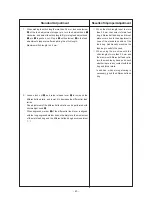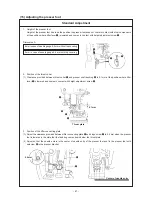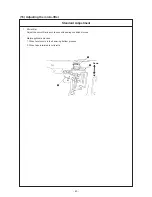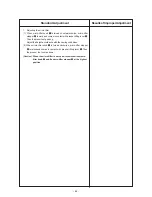
–
34
–
Standard Adjustment
Results of lmproper Adjustment
1. Loosen setscrew
7
in the differential feed dog and setscrew
3
in
the main feed dog, and adjust the height.
(1) Adjust the top surface of throat plate
1
and the height of the rear
end of main feed dog
2
to 1 mm when feed dogs
2
and
4
come
to the highest position, and fix the main feed dog with setscrew
3
in the main feed dog.
(2) Fot the height of differential feed dog
4
, adjust the height of front
end
5
of main feed dog
2
and rear end
6
of differential feed dog
4
, and fix the differential feed dog with setscrew
7
in the differential
feed dog.
2. Adjusting the tilt of the feed dog
(1) Remove rubber plug
8
in the cover located in the rear of the bed
and loosen the setscrew in the feed tilt adjustment shaft located in
the rear with a hexagonal wrench key of 2.5 mm.
(2) When turning feed dog tilt adjustment shaft
9
to the right or left,
the top ends of feed dogs
2
and
4
move up or down and the tilt of
feed dogs
2
and
4
can be adjusted.
(Caution)
After the adjustment check the height of feed dogs
2
and
4
.
™
When the position of the feed dog is
high, stitch skipping, defective chain-
off, return of feed, etc. will be caused.
Throat plate comes in contact with
feed dod and damage of components
or abnormal noise will be caused.
™
When the position of the feed dog is
low, the stitch length becomes short
when the sewing is finished and
performance of getting over the
overlapped section is deteriorated.
™
When the position of the feed dog is
excessively low, looper and feed dog
may come in contact with each other.
™
When the tilt of the feed dog is raised
toward you, performance of catching
material is improved.
™
When the tilt of the feed dog is lowered
toward you, it is effective in irregular
stitches and puckering.



















